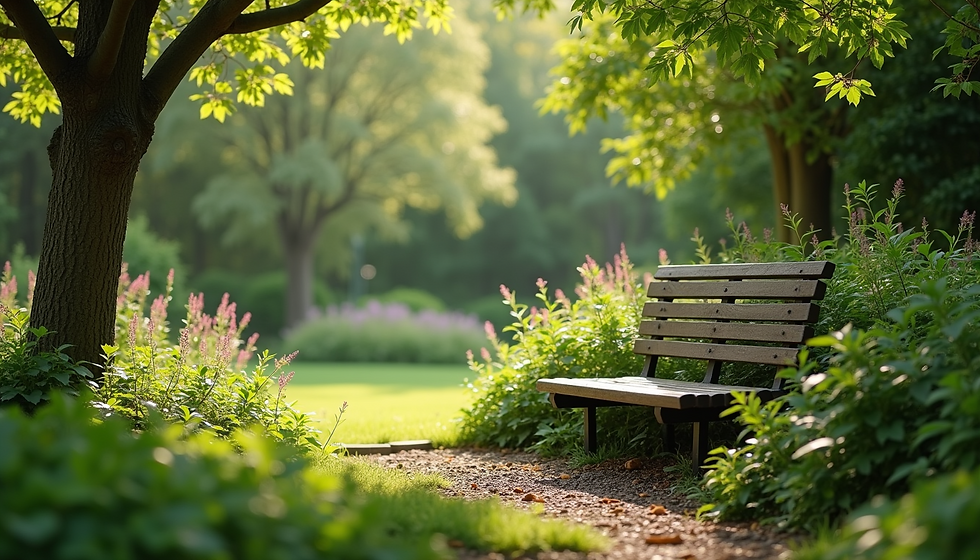Beyond the Walls: Ensuring Safe Outdoor Spaces for Individuals with Intellectual Disabilities
- Harrell Homes
- Jun 25
- 3 min read
Access to outdoor spaces is vital for well-being, promoting physical activity, sensory engagement, and a sense of freedom. For individuals with intellectual disabilities, ensuring these areas are safe and secure is a paramount concern for caregivers and families. The level and type of security needed will vary greatly depending on the living situation, whether it's a private home, an apartment, an assisted living residence, or even a rented room.

Here's a comprehensive guide to help you create and maintain secure outdoor environments for your loved one.
Why Outdoor Safety is Crucial for Individuals with Intellectual Disabilities
Individuals with intellectual disabilities may face unique challenges in outdoor environments:
Elopement Risk: A tendency to wander or elope, especially if disoriented or seeking a specific interest.
Difficulty Assessing Risk: They may not recognize or understand common dangers like traffic, water, or hazardous objects.
Communication Barriers: Inability to call for help or explain if they are lost or in trouble.
Sensory Sensitivities: Overstimulation from outdoor environments could lead to unexpected reactions or a desire to escape.
Given these factors, proactive measures are key to preventing accidents and ensuring peace of mind.
Safety Tips for Different Living Situations:
1. Private Homes (Especially with Backyards)
For homes with private outdoor spaces, particularly backyards, comprehensive security is essential:
Secure Fencing:
Height & Material: Ensure fences are tall enough to deter climbing (consider at least 6 feet) and made of sturdy material without easy footholds.
No Gaps: Regularly inspect for any gaps or holes at the bottom or sides that a person could squeeze through.
Gate Security: All gates should be self-latching and equipped with locks that are difficult for the individual to manipulate (e.g., child-proof latches, key locks, or latches placed out of reach).
Pool Safety: If a pool is present, it must have a self-closing, self-latching fence around all four sides, separate from the house fence, and potentially a pool alarm.
Remove Hazards: Store tools, chemicals, sharp objects, and heavy equipment securely in a locked shed or garage. Ensure plants are non-toxic.
Supervision: Even with secure fencing, direct supervision remains the most effective safety measure for many individuals.
2. Apartments
Apartment living presents different outdoor safety considerations, often involving balconies and shared common areas:
Balcony Safety:
Secure Railings: Ensure railings are high enough and have no large gaps where a person could fall through or climb.
Remove Climbing Aids: Do not place furniture, planters, or other items near railings that could be used for climbing.
Lock Doors: Keep balcony doors locked when not in use or when supervision is not direct.
Window Guards: Install window guards, especially on upper floors, to prevent accidental falls.
Common Area Awareness: Understand the safety measures in shared outdoor spaces (playgrounds, courtyards) and supervise during use.
Building Entry/Exit: Discuss with building management about securing entry/exit points to prevent wandering from the building itself.
3. Assisted Living Homes (Like Harrell Assisted Living Homes)
Reputable assisted living facilities specializing in individuals with intellectual disabilities prioritize secure outdoor access as part of their design and operational protocols:
Secure Outdoor Areas: Facilities often feature enclosed courtyards or designated outdoor spaces with secure fencing and controlled access points.
Staff Supervision: Trained staff provide vigilant supervision during outdoor activities, ensuring safety and engagement.
Controlled Egress: Entry and exit points to the building and outdoor areas are typically monitored and secured to prevent unsupervised wandering.
Hazard-Free Design: Outdoor areas are designed with safety in mind, minimizing tripping hazards, toxic plants, and other risks.
Emergency Protocols: Staff are trained in emergency procedures, including protocols for elopement, ensuring rapid response if an individual leaves a secured area. When considering an assisted living home, always inquire about their specific outdoor safety and elopement prevention policies.
4. Rented Rooms
For individuals renting a room, outdoor access often involves shared property or public spaces.
Understanding Access: Clarify with the landlord or homeowner about rules and access to any shared outdoor areas (e.g., backyard, porch).
Exit Awareness: Ensure the individual understands which doors lead outside and when it is appropriate to use them.
Buddy System/Supervision: If outdoor time is desired, a buddy system or direct supervision is often the best approach, especially for unfamiliar public areas.
Emergency Contact Information: Always ensure the individual carries emergency contact information.
Creating a safe outdoor environment requires careful planning, consistent supervision, and regular assessment. By implementing these tips and maintaining open communication with all caregivers and support staff, you can ensure that individuals with intellectual disabilities can safely enjoy the enriching experiences that outdoor spaces offer.

.png)





Comments